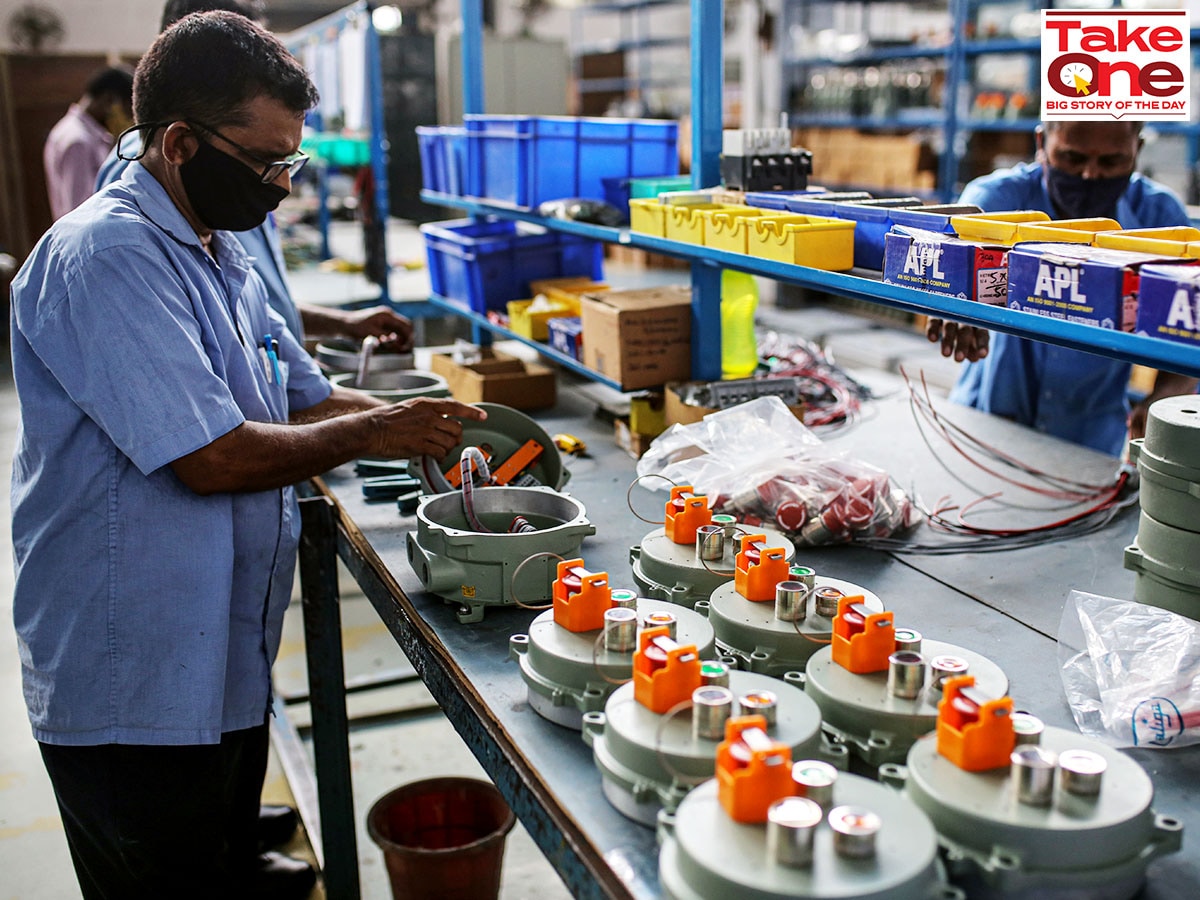 Industry experts feel that the Union Budget 2025 must focus on expanding the PLI scheme to encompass green energy, advanced textiles, space tech and electronics components among many others; Image: Dhiraj Singh/Bloomberg via Getty Images
Industry experts feel that the Union Budget 2025 must focus on expanding the PLI scheme to encompass green energy, advanced textiles, space tech and electronics components among many others; Image: Dhiraj Singh/Bloomberg via Getty Images
Since its launch, the Production Linked Incentive (PLI) scheme has made significant strides in boosting India’s manufacturing sector. It has attracted over $17 billion (Rs 1.4 trillion) in investments across key industries such as electronics, automotive, and pharmaceuticals, driven Rs 11 trillion in production, and created over 1 million jobs as per Grant Thornton Bharat. These achievements underscore the transformative potential of the PLI scheme.
However, while progress has been made, there is still much more to be done to fully realise its impact. Industry experts feel that the Union Budget 2025 must focus on expanding the PLI scheme to encompass green energy, advanced textiles, space tech and electronics components among many others.
Focus on Research & Development
A crucial area of focus for the PLI scheme should be research and development (R&D). Sachin Sharma, partner, Grant Thornton Bharat, says, “Encourage R&D investments through tax exemptions for companies innovating in sustainable manufacturing technologies. Also, target incentives for domestic value addition and labour-intensive operations to boost employment.”
Even for a sunrise sector like drone tech, the PLI Scheme has been highly beneficial. Garuda Aerospace, for instance, has sold over 3,000 drones in just the last two years and accumulated over 1 million flight hours. “We believe that extending the PLI scheme beyond its current timeframe would provide greater stability and encourage long-term investments in R&D and manufacturing capacity, particularly in areas related to Unmanned Traffic Management (UTM) and advanced drone technologies. This expansion would create a more holistic ecosystem and encourage the development of comprehensive drone solutions,” says Agnishwar Jayaprakash, founder and CEO of Garuda Aerospace.
More job creation
While the PLI scheme is a step in the right direction it does not put a premium on in-country value addition, and secondly, it needs to be oriented to job creation at scale, particularly through industries in the underserved Tier-2 cities. “It is imperative to extend more robust support towards labour-intensive sectors such as textiles, leather, food processing, and toy manufacturing. These industries are vital for grassroots employment and can contribute to India’s economic growth by significantly enhancing exports from the country,” says Aravind Melligeri, chairman & CEO, Aequs, a diversified contract manufacturing company.
The Employment Linked Incentive (ELI) Scheme announced in the last Union Budget is a step in this direction. “But even a year later its contours are yet to be known and perhaps there is a case to extend it beyond the first-time employees in low-skill, high volume manufacturing where most job creation happens in the country,” he adds. Benefits under any such scheme should also be tied to moving manufacturing away from the metros and established centres of production, only then the objective of job creation can be achieved, he says.
Efficient disbursement of PLI subsidies
A big issue when it comes to the PLI scheme has been delay in the disbursement of subsidies. “Funds and timely payments are a big challenge to survival of MSMEs in India. The government is expected to extend current credit schemes and also introduce new credit schemes to help MSMEs and startups participating in PLI,” says Sameer Gogia, executive director, Deloitte India. Akash Agrawal, co-founder of Zoff Foods, an MSME working in the food processing and spice industries, also feels that “simplifying the application process and providing timely payouts will make a significant difference, especially for smaller businesses, allowing them to access these benefits and drive innovation.”
Furthermore, Melligeri of Aequs adds, “Prompt and efficient disbursement of PLI subsidies is essential to maintain the momentum and confidence of manufacturers. I hope that the upcoming budget will facilitate a course correction in policies, paving the way for a more diversified and resilient manufacturing sector that harnesses the full potential of India’s demographic dividend.”
Targeting export markets
The PLI scheme is critical to boost global supply chains, especially for countries looking to reduce complete dependency on China for imports. “Countries are always looking to invest in good potential Indian businesses since growth in India is high due to low labour costs, low ecosystem costs altogether. A further boost could be provided by simplifying the GST structure in emerging manufacturing sectors where import reliance is required to be reduced,” says Gogia.
Even with the pharmaceuticals industry, a further expansion of the PLI scheme will help “strengthening the capabilities of domestic manufacturers and diversifying the supply chain will position India as a key global value contributor in the pharmaceutical sector,” says Sudarshan Jain, Secretary General of the Indian Pharmaceutical Alliance.
Within the electronics manufacturing sector, Zetwerk for instance, is working towards supporting both Indian Value Chains and Global Value Chains by identifying and capitalising on value addition opportunities within India and strategically expanding into the US and European markets. “This export-driven strategy, coupled with the significant growth potential within the domestic market, particularly in areas like IT hardware, consumer durables, and smart home devices, can propel the Indian ESDM sector to $500 billion annual revenue,” says Josh Foulger, president (electronics), Zetwerk Manufacturing Businesses.
 Industry experts feel that the Union Budget 2025 must focus on expanding the PLI scheme to encompass green energy, advanced textiles, space tech and electronics components among many others; Image: Dhiraj Singh/Bloomberg via Getty Images
Industry experts feel that the Union Budget 2025 must focus on expanding the PLI scheme to encompass green energy, advanced textiles, space tech and electronics components among many others; Image: Dhiraj Singh/Bloomberg via Getty Images